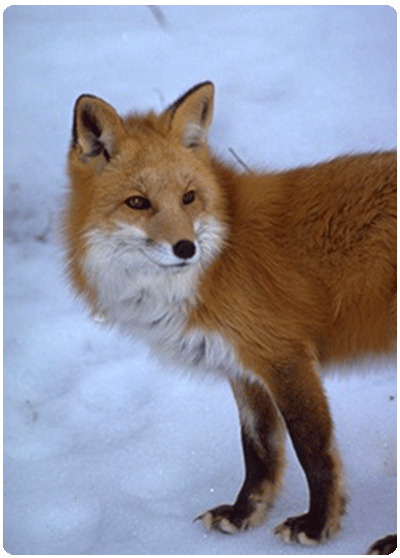What Is Canine Distemper?

Canine distemper is a highly contagious viral disease of wild and domestic carnivores. The virus is widespread and has a broad host range among North American carnivores including the mink, striped skunks, fishers, red and gray fox, raccoons, coyotes, and weasels. Mortality is higher in juveniles than adults.
In wild animals, since the juveniles are more susceptible to infection, the majority of cases are seen in the spring and summer, but outbreaks may occur year round.
Canine distemper virus is related to rubeola (red measles) but poses no known threat to humans. However, unvaccinated dogs and cats are susceptible to contracting the disease, so pet owners should keep their pet vaccinations up to date.
How Is Canine Distemper Transmitted?
Direct contact with an infected animal or its bodily secretions and waste may infect a healthy animal. Under most environmental conditions the virus does not survive long outside the body; therefore, transmission requires close interaction between animals to enable direct contact or aerosol exposure.
Infected animals may shed the virus starting approximately five days after infection, for a period of as long as six weeks or until death.
What Are the Clinical Signs of Canine Distemper?
Symptoms of the disease are similar in all susceptible species. In wild animals, abnormal behavior and apparent lack of fear, suggestive of rabies, may be the only obvious signs of infection. Other symptoms include distress, coughing, sneezing, diarrhea, discharge from eyes and/or nostrils, eyelids that are crusted over and stuck together, and hardened footpads.
Infected animals may have convulsions, tremors and chewing fits. They may appear blind, stumble and fall, exhibit stupor and paralysis. An infected animal that is typically nocturnal may be seen wandering aimlessly during the day.
How Is Canine Distemper Diagnosed and Controlled?
Definitive diagnosis is based on laboratory analysis of affected tissues by fluorescent antibody techniques.
No specific drug is available that will kill the virus in infected animals. Due to the similarity of some of the clinical signs of canine distemper and rabies, affected animals should be handled with caution by an animal control professional until a diagnosis is confirmed.
Control of canine distemper outbreaks includes the removing carcasses of animals that have died from the disease, vaccinating susceptible domestic species to decrease the number of susceptible hosts, and reducing wildlife populations, which also reduces the number of potential hosts.
What Is the Significance of Canine Distemper on Wildlife?
Outbreaks of canine distemper may have a significant impact on local or regional populations of raccoons, gray foxes and skunks in parts of the United States and on raccoons in Canada. Transmission of canine distemper is likely density-dependent; the disease poses a threat mainly to concentrated populations of previously unexposed susceptible species.
The origin of virus introduced into susceptible populations is unclear, there often appears to be little relationship between canine distemper activity in domestic populations and that in wildlife.
Canine distemper is of no public health significance to humans
